Postdoc - Physics
The University of Pennsylvania - 2014
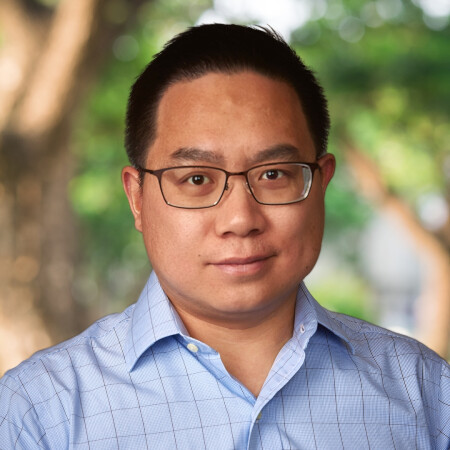
Fan Zhang
Professor of Physics
Professional Preparation
Ph.D. - Physics
The University of Texas at Austin - 2011
The University of Texas at Austin - 2011
B.S. - Physics
University of Science and Technology of China - 2006
University of Science and Technology of China - 2006
Publications
Signatures of sliding Wigner crystals in bilayer graphene at zero and finite magnetic fields 2025 - Journal Article
Ferroelectric and spontaneous quantum Hall states in intrinsic rhombohedral trilayer graphene 2024 - Journal Article
Giant Tunability of Intersubband Transitions and Quantum Hall Quartets in Few-Layer InSe Quantum Wells 2024 - Journal Article
Large quantum anomalous Hall effect in spin-orbit proximitized rhombohedral graphene 2024 - Journal Article
Awards
Edith and Peter O’Donnell Award in Physical Sciences - The Texas Academy of Medicine, Engineering, Science and Technology [2026]
APS Fellow - The American Physical Society [2025]
Humboldt Research Award - The Alexander von Humboldt Foundation of Germany [2024]
CAREER Award - The U.S. National Science Foundation [2020]
Herbert B. Callen Memorial Prize - The University of Pennsylvania [2013]
News Articles
Scientists Tune In to Rhombohedral Graphene’s Potential
 University of Texas at Dallas scientists are investigating how structures made from several layers of graphene stack up in terms of their fundamental physics and their potential as reconfigurable semiconductors for advanced electronics.
University of Texas at Dallas scientists are investigating how structures made from several layers of graphene stack up in terms of their fundamental physics and their potential as reconfigurable semiconductors for advanced electronics.Graphene is a single layer of carbon atoms arranged in a flat honeycomb pattern whereby each hexagon is formed by six carbon atoms at its vertices. Since graphene’s first isolation in 2004 — which later led to a Nobel Prize in physics — scientists and engineers have intensely studied its unique physical properties as well as its potential applications.
Dr. Fan Zhang, professor of physics in the School of Natural Sciences and Mathematics at UT Dallas, is a theorist who for more than a decade has been examining the electronic properties that emerge when layers of graphene are stacked in a chiral manner to form a rhombohedral structure.
Quantum Geometry Found To Be Newest Twist in Superconductivity
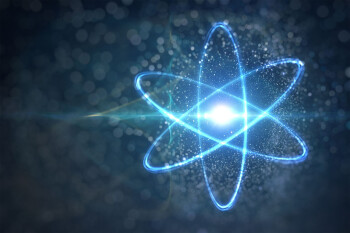 Scientists at The University of Texas at Dallas and their collaborators at The Ohio State University have identified a new mechanism that gives rise to superconductivity in a material in which the speed of electrons is nearly zero, potentially opening a pathway to the design of new superconductors.
Scientists at The University of Texas at Dallas and their collaborators at The Ohio State University have identified a new mechanism that gives rise to superconductivity in a material in which the speed of electrons is nearly zero, potentially opening a pathway to the design of new superconductors.Their findings, published online Feb. 15 in the journal Nature, demonstrate a new way to measure electron speed and mark the first time that quantum geometry has been identified as the predominant contributing mechanism to superconductivity in any material.
The material the researchers studied is twisted bilayer graphene. Graphene is a single layer of carbon atoms arranged periodically in a honeycomb pattern. In twisted bilayer graphene, two sheets of graphene are stacked on top of one another with a slight angular twist. In principle, at a certain “magic” twist angle, the speed of electrons in the material approaches zero, said Dr. Fan Zhang, associate professor of physics in the School of Natural Sciences and Mathematics at UT Dallas and an author of the study. Zhang, a theorist, and his collaborators previously published a review article about the unique physical properties of such systems.
Physicists Invent Intelligent Quantum Sensor of Light Waves
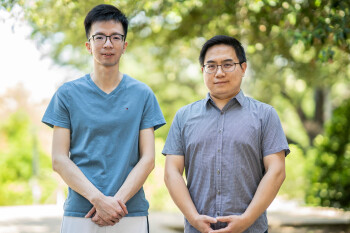 University of Texas at Dallas physicists and their collaborators at Yale University have demonstrated an atomically thin, intelligent quantum sensor that can simultaneously detect all the fundamental properties of an incoming light wave.
University of Texas at Dallas physicists and their collaborators at Yale University have demonstrated an atomically thin, intelligent quantum sensor that can simultaneously detect all the fundamental properties of an incoming light wave.The research, published April 13 in the journal Nature, demonstrates a new concept based on quantum geometry that could find use in health care, deep-space exploration and remote-sensing applications.
“We are excited about this work because typically, when you want to characterize a wave of light, you have to use different instruments to gather information, such as the intensity, wavelength and polarization state of the light. Those instruments are bulky and can occupy a significant area on an optical table,” said Dr. Fan Zhang, a corresponding author of the study and associate professor of physics in the School of Natural Sciences and Mathematics.
Physicists Discover Novel Quantum Effect in Bilayer Graphene
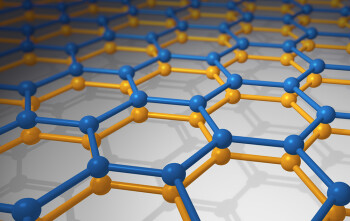 Theorists at The University of Texas at Dallas, along with colleagues in Germany, have for the first time observed a rare phenomenon called the quantum anomalous Hall effect in a very simple material. Previous experiments have detected it only in complex or delicate materials.
Theorists at The University of Texas at Dallas, along with colleagues in Germany, have for the first time observed a rare phenomenon called the quantum anomalous Hall effect in a very simple material. Previous experiments have detected it only in complex or delicate materials.Dr. Fan Zhang, associate professor of physics in the School of Natural Sciences and Mathematics, is an author of a study published on Oct. 6 in the journal Nature that demonstrates the exotic behavior in bilayer graphene, which is a naturally occurring, two-atom thin layer of carbon atoms arranged in two honeycomb lattices stacked together.
High-Quality Crystals Reveal New Physics of Topological Insulators
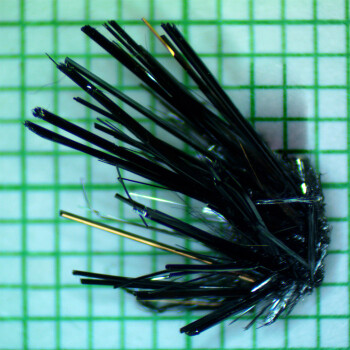 Combining exceptional crystal-growing skills with theoretical predictions, the University of Texas at Dallas scientists and their collaborators have revealed new insights into materials called topological insulators.
Combining exceptional crystal-growing skills with theoretical predictions, the University of Texas at Dallas scientists and their collaborators have revealed new insights into materials called topological insulators.Topological insulators (TIs) behave like insulators in their interiors but are conductors on their exteriors. There are distinctive families of topological insulators: strong TIs, which are common in nature; weak TIs, which are rare and difficult to produce in the lab; and another rare class called higher-order TIs.
In a cube-shaped, strong topological insulator, for example, all six faces can conduct electrons robustly. In a weak TI, only four sides are conducting, while the top and bottom surfaces remain insulating. In a higher-order TI, electrons move only along selected hinges, where two crystal faces intersect.